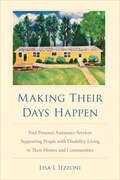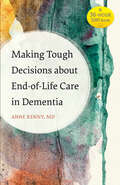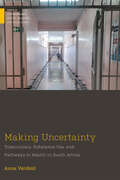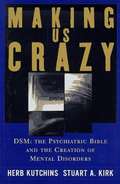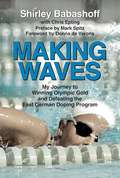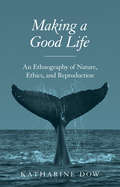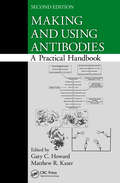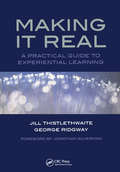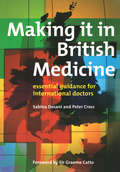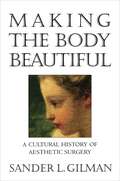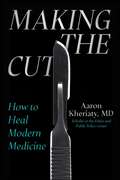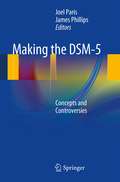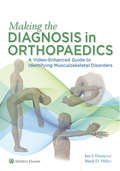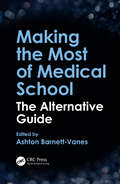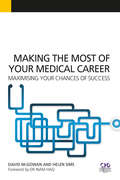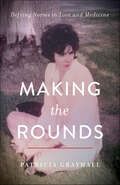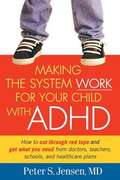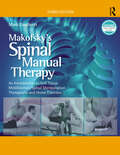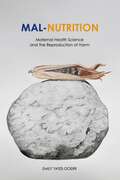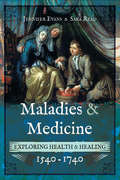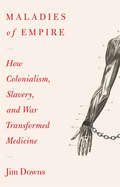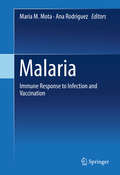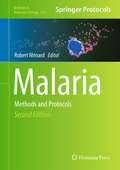- Table View
- List View
Making Their Days Happen: Paid Personal Assistance Services Supporting People with Disability Living in Their Homes and Communities
by Lisa I. IezzoniMost Americans—even those with significant disability—want to live in their homes and communities. Unpaid family members or friends often work as “informal” caregivers, helping those who need assistance— and many feel they have no option but to serve. In contrast, paid personal assistance services workers (PAS) provide a lifeline to those consumers with complex needs and limited social networks. However, there is a crisis looming in the increasing needs for paid PAS and the limited available PAS workforce. Making Their Days Happen explores disability, health, and civil rights, along with relevant federal and state labor policies related to personal assistance services. Lisa Iezzoni addresses the legal context of paid PAS as well as financing mechanisms for obtaining home-based personal assistance. She also draws upon interviews she conducted with paid PAS consumers and PAS workers to explore PAS experiences and their perspectives about their work. Offering recommendations for improving future experiences of PAS consumers and providers, Iezzoni emphasizes that people with disabilities want to be a part of society, and PAS workers who do this low-wage work find satisfaction in helping them achieve their goals.
Making Them Pay: How to Get the Most from Health Insurance and Managed Care
by Rhonda D. OrinMost people don't understand health insurance, and insurance companies know it. Unfair denials, late payments, and hopeless confusion are the norm. At last there is a solution. In eight easy steps, Making Them Pay gives practical advice about the things that drive people crazy. Like:-Figuring out what health plans really say-Understanding what benefits they provide-Finding, and understanding, the exclusions-Determining what health plans really cost-How to talk to customer service, and other painful details-Easy ways to keep good records-Laws that can change your life-like the mandatory benefits laws in all fifty states-How to prepare successful appealsAlong with this useful advice, Making Them Pay offers a much-needed sense of humor. It's filled with cartoons, sidebars, and vignettes that will make you laugh as you learn. Based on Rhonda D. Orin's extensive experience as a litigator, a journalist, and a mother fighting her own family's insurance battles, Making Them Pay is the book your health insurer doesn't want you to read."A compact reference [that] simplifies a convoluted subject. -
Making Tough Decisions about End-of-Life Care in Dementia (A 36-Hour Day Book)
by Anne KennyPractical, essential advice about making tough decisions for people with end-stage dementia.Each year, more than 500,000 people are diagnosed with dementia in the United States. As stunning as that figure is, countless family members and caregivers are also affected by each diagnosis. Families are faced with the need to make vital end-of-life decisions about medical treatment, legal and financial matters, and living situations for those who no longer can; no one is prepared for this process. And many caregivers grapple with sadness, confusion, guilt, anger, and physical and mental exhaustion as dementia enters its final stage. In Making Tough Decisions about End-of-Life Care in Dementia, Dr. Anne Kenny, a skilled palliative care physician, describes how to navigate the difficult journey of late-stage dementia with sensitivity, compassion, and common sense. Combining her personal experience caring for a mother with dementia with her medical expertise in both dementia and end-of-life care, Dr. Kenny helps the reader prepare for a family member's death while managing their own emotional health.Drawing on stories of families that Dr. Kenny has worked with to illustrate common issues, concerns, and situations that occurs in late-stage dementia, this book includes practical advice about• making life-altering decisions while preparing for a loved one's inevitable death• medical care, pain, insomnia, medication, and eating • caring for the caregiver• having conversations about difficult topics with other family members and with health care, legal, and financial professionalsConcrete to-do lists and lists of important points provide information at a glance for busy caregivers. Each chapter concludes with a list of additional resources for more information and help. Making Tough Decisions about End-of-Life Care in Dementia is a lifeline, an invaluable guide to assist in the late stage of dementia.
Making Uncertainty: Tuberculosis, Substance Use, and Pathways to Health in South Africa (Medical Anthropology)
by Anna VersfeldIn Cape Town, South Africa, many people with tuberculosis also use substances. This sets up a seemingly impossible problem: People who use substances are at increased risk of tuberculosis disease; and substance use seems to result in erratic behavior that makes successful treatment of people affected by tuberculosis extremely difficult. People affected don’t get healthy, healthcare providers are frustrated, and families seek to balance love and care for those who are ill with self-protection. How are we to understand this? Where does the responsibility for poor health and healing lie? What are the possibilities for an effective healthcare response? Through a close look at lives and care, Making Uncertainty: Tuberculosis, Substance Use, and Pathways to Health shows how patterns of substance use, tuberculosis disease, and their interaction are shaped by history, social context, and political economy. This, in turn, generates new perspectives on what makes poor health, and what good care might look like.
Making Us Crazy: The Psychiatric Bible and the Creation of Mental Disorders
by Herb Kutchins Stuart A. KirkThe authors map the complex, quirky history of the DSM, often called the "psychiatric Bible" from its inception in the early 1950s to the present. They show that the DSM has been used and misused to shape social policy toward people with mental illnesses. The DSM has also been highly subject to political currents. Specific "diagnoses" such as homosexuality, borderline personality, and post-traumatic stress disorder are discussed in depth as illustrations.
Making Waves: My Journey to Winning Olympic Gold and Defeating the East German Doping Program
by Chris Epting Shirley Babashoff<p>In her extraordinary swimming career, Shirley Babashoff set thirty-nine national records and eleven world records. Prior to the 1990s, she was the most successful U.S. female Olympian and, in her prime, was widely considered to be the greatest female swimmer in the world. <p>Heading into the 1976 Olympic Games in Montreal, Babashoff was pictured on the cover of Sports Illustrated and followed closely by the media. Hopes were high that she would become “the female Mark Spitz.” <p>All of that changed once Babashoff questioned the shocking masculinity of the swimmers on the East German women’s team. Once celebrated as America’s golden girl, Babashoff was accused of poor sportsmanship and vilified by the press with a new nickname: “Surly Shirley.” <p>Making Waves displays the remarkable strength and resilience that made Babashoff such a dynamic champion. From her difficult childhood and beginnings as a determined young athlete growing up in Southern California in the 1960s, through her triumphs as the greatest female amateur swimmer in the world, Babashoff tells her story in the same unflinching manner that made her both the most dominant female swimmer of her time and one of the most controversial athletes in Olympic history.</p>
Making a Good Life: An Ethnography of Nature, Ethics, and Reproduction
by Katharine DowMaking a Good Life takes a timely look at the ideas and values that inform how people think about reproduction and assisted reproductive technologies. In an era of heightened scrutiny about parenting and reproduction, fears about environmental degradation, and the rise of the biotechnology industry, Katharine Dow delves into the reproductive ethics of those who do not have a personal stake in assisted reproductive technologies, but who are building lives inspired and influenced by environmentalism and concerns about the natural world's future.Moving away from experiences of infertility treatments tied to the clinic and laboratory, Dow instead explores reproduction and assisted reproductive technologies as topics of public concern and debate, and she examines how people living in a coastal village in rural Scotland make ethical decisions and judgments about these matters. In particular, Dow engages with people's ideas about nature and naturalness, and how these relate to views about parenting and building stable environments for future generations. Taking into account the ways daily responsibilities and commitments are balanced with moral values, Dow suggests there is still much to uncover about reproductive ethics. Analyzing how ideas about reproduction intersect with wider ethical struggles, Making a Good Life offers a new approach to researching, thinking, and writing about nature, ethics, and reproduction.
Making an Effective Bid: A practical guide for research, teaching and consultancy (Radcliffe Ser.)
by Ruth Chambers Kenneth C. CalmanMany people waste a great deal of time writing bids or tenders that are not successful. Even worse, they may succeed in gaining funding for a project or service where the plans and budgeting are poorly thought through in relation to the implementation or application. That can be a very costly mistake if the funding you gain is insufficient but you are stuck with developing the project or service. "Making an Effective Bid" outlines everything you need to know for writing successful bids and tenders. It is full of tips and advice and introduces ideas for building up contacts, setting up networks, organising potential collaborators and avoiding pitfalls. Examples of successful and not-so-successful bids are included to fully illustrate the concepts. With practice, you should become more adept at writing bids and gaining funds that further your work and career. This book is a vital guide for those in health and social care who are required to, or want to, make a bid or tender for resources - for money, work, staff, equipment, research, educational activities or a new service. It will help you to develop a greater understanding of making successful bids, and go on to compose a bid or tender with the essential ingredients to succeed. "This book is for anyone working in health and social care who is required to, or wants to, make a bid or tender for resources- for money, work, people/staff, equipment etc or research, educational activities or a new service. This will include academics, and health and social care personnel. It will help you to develop a greater understanding of how to make a successful bid, and go on to compose a bid or tender with the right ingredients to succeed. So buying the book and spending time reading it should be a great investment." - Ruth Chambers, in the Preface.
Making and Using Antibodies: A Practical Handbook, Second Edition
by Gary C. Howard Matthew R. KaserAntibodies protect us from a wide range of infectious diseases and cancers and have become an indispensable tool in science-both for conventional immune response research as well as other areas related to protein identification analysis. This second edition of Making and Using Antibodies: A Practical Handbook provides clear guidance on all aspects
Making it Real: Pt. 2, 2008
by Jill Thistlethwaite George RidgwayThis work includes a Foreword by Jonathan Silverman, Associate Clinical Dean and Director of Communication Studies, School of Clinical Medicine, University of Cambridge. Emphasis is placed on shared decision making, appraisal, and dealing with difficult situations as well as the more common topics such as taking a history and breaking bad news. Healthcare educators with an interest in communication skills training and personal and professional development will find this guide invaluable, as will undergraduate and postgraduate teachers in university and workplace settings. "As its central component, this manual of experiential learning provides a bank of ready-made simulated patient scenarios that will prove invaluable to anybody setting up a programme from scratch - here is a collection of scenarios with information for facilitators, participants and simulated patients and hints on how to run sessions on specific topics and it is clearly not just for beginners - those already running established programs will also find it so useful to be able to turn to a resource of simulated patient scenarios when planning a new session." "Now educators can turn to a practical source of expert guidance in setting up sessions utilising simulated patients. Experiential work with simulated patients is the most effective way of improving learners' communication skills. Practical, thoughtful and well considered help such as this new book is worth its weight in gold and will help so many educators as they strive to introduce this approach to learning into medical curricula and assessments." - Jonathan Silverman, in the Foreword.
Making it in British Medicine: Essential Guidance for International Doctors
by Sabina Dosani Peter CrossGone are the days when you present to colleagues with hand-drawn overheads. Presenting Health with PowerPoint shows how you can work through PowerPoint to create effective presentations. In an easy-to-use step-by-step format it takes you through the components of the European Computer Driving Licence the basic IT qualification and guides you through the text by showing what actually appears on the computer using screenshots toolbar icons mouse and keyboard actions. The accompanying CD-ROM provides downloadable resources and useful website links. Presenting Health with PowerPoint is designed for doctors nurses and managers at all levels throughout primary and secondary care who need not have prior knowledge of Microsoft PowerPoint.
Making the Body Beautiful: A Cultural History of Aesthetic Surgery
by Sander L. GilmanNose reconstructions have been common in India for centuries. South Korea, Brazil, and Israel have become international centers for procedures ranging from eyelid restructuring to buttock lifts and tummy tucks. Argentina has the highest rate of silicone implants in the world. Around the globe, aesthetic surgery has become a cultural and medical fixture. Sander Gilman seeks to explain why by presenting the first systematic world history and cultural theory of aesthetic surgery. Touching on subjects as diverse as getting a "nose job" as a sweet-sixteen birthday present and the removal of male breasts in seventh-century Alexandria, Gilman argues that aesthetic surgery has such universal appeal because it helps people to "pass," to be seen as a member of a group with which they want to or need to identify. Gilman begins by addressing basic questions about the history of aesthetic surgery. What surgical procedures have been performed? Which are considered aesthetic and why? Who are the patients? What is the place of aesthetic surgery in modern culture? He then turns his attention to that focus of countless human anxieties: the nose. Gilman discusses how people have reshaped their noses to repair the ravages of war and disease (principally syphilis), to match prevailing ideas of beauty, and to avoid association with negative images of the "Jew," the "Irish," the "Oriental," or the "Black." He examines how we have used aesthetic surgery on almost every conceivable part of the body to try to pass as younger, stronger, thinner, and more erotic. Gilman also explores some of the extremes of surgery as personal transformation, discussing transgender surgery, adult circumcision and foreskin restoration, the enhancement of dueling scars, and even a performance artist who had herself altered to resemble the Mona Lisa. The book draws on an extraordinary range of sources. Gilman is as comfortable discussing Nietzsche, Yeats, and Darwin as he is grisly medical details, Michael Jackson, and Barbra Streisand's decision to keep her own nose. The book contains dozens of arresting images of people before, during, and after surgery. This is a profound, provocative, and engaging study of how humans have sought to change their lives by transforming their bodies.
Making the Cut: How to Heal Modern Medicine
by Aaron KheriatyThere is a cure for medicine&’s ills, but it&’s going to hurt. Effective treatment, as every doctor knows, begins with accurate diagnosis. Making the Cut is about what&’s going on in the house of medicine. Medicine got sick. One in three people now distrust the healthcare system. Following the pandemic, two-thirds of Americans doubt medical scientists will act in the best interest of the public. We are grappling with an epidemic of chronic illness—heart disease, cancer, diabetes, Alzheimer&’s, stroke, and chronic lung and kidney disease—affecting six in ten Americans, which medicine seems powerless to fix. The overall life expectancy of Americans has declined for the first time since the Great Depression. Not only are trust levels tanking, the number of doctors is dropping dramatically. Physicians are quitting in droves. One in five doctors will leave medicine in the next two years. One in three will reduce their hours. A doctor, we assume, wounds in order to heal. &“You&’re going to feel a sharp pain!&” she says, before making the cut. Today, though, all too often the doctor wounds without healing. Why? In Making the Cut, Dr. Aaron Kheriaty, one of the country's leading public intellectuals and preeminent bioethicists, reveals what medicine gave him—and what it sometimes took from him. This book is about how he grew from an overconfident pre-med to an ambivalent medical student to a capable physician who had fallen in love with medicine—even if his lover has turned into a prostitute of late. While presenting a damning diagnosis of contemporary medicine, Making the Cut also applies the wounding scalpel in order to heal it.
Making the DSM-5
by Joel Paris James PhillipsIn 2013, the American Psychiatric Association published the 5th edition of its Diagnostic and Statistical Manual of Mental Disorders (DSM-5). Often referred to as the "bible" of psychiatry, the manual only classifies mental disorders and does not explain them or guide their treatment. While science should be the basis of any diagnostic system, to date, there is no knowledge on whether most conditions listed in the manual are true diseases. Moreover, in DSM-5 the overall definition of mental disorder is weak, failing to distinguish psychopathology from normality. In spite of all the progress that has been made in neuroscience over the last few decades, the psychiatric community is no closer to understanding the etiology and pathogenesis of mental disorders than it was fifty years ago. In Making the DSM-5, prominent experts delve into the debate about psychiatric nosology and examine the conceptual and pragmatic issues underlying the new manual. While retracing the historic controversy over DSM, considering the political context and economic impact of the manual, and focusing on what was revised or left unchanged in the new edition, this timely volume addresses the main concerns of the future of psychiatry and questions whether the DSM legacy can truly improve the specialty and advance its goals.
Making the Diagnosis in Orthopaedics: A Video-enhanced Guide To Identifying Musculoskeletal Disorders
by Mark D. Miller Ian J. DempseyPublisher's Note: Products purchased from 3rd Party sellers are not guaranteed by the Publisher for quality, authenticity, or access to any online entitlements included with the product. Comprehensive and written in a simple, to-the-point style, the brand-new Making the Diagnosis: A Video-Enhanced Guide to Identifying Musculoskeletal Disorders combines physical diagnostic techniques with related radiographic imaging to help you address a variety of injuries and disorders in adults and children. Each section focuses on a specific anatomical area—such as the knee, shoulder, hip, spine, and others—and goes in-depth into the physical exam, important radiologic findings, and suggested treatments.
Making the Most of Medical School: The Alternative Guide
by Ashton Barnett-VanesThis concise guide to medical school offers an alternative path to developing a diverse set of academic and professional skills for a successful career in medicine. Written for current and prospective medical students, chapters are structured around eight key themes relevant to the active ‘all-rounder’ medic, including learning and leading high-quality research, opportunities in global health, further academic degrees and the complementary career options available to today’s medical graduate. This book serves as essential reading for anyone considering and embarked upon an exciting career in medicine.
Making the Most of Your Medical Career: Maximising Your Chances of Success
by David McGowanThis book provides an excellent and easy-to-read path to making the most of your medical career starting as a student...and a ready source of really useful hints and tips that will help anyone reading this book maximise their personal and professional development.' From the Foreword by Dr Inam Haq Want to optimise your chances of success? Take a fresh look at the clinical world. Medical careers have changed and learning how to play the game is as important as being the best in your field. This inspirational new guide considers your medical career from a wide-ranging perspective, encouraging a positive, early outlook. On a highly practical note, it acts as a comprehensive information source, covering all aspects of job applications and medical careers. On a personal note the book fosters a complete reassessment of the way you view your working life. It offers fresh ideas to help identify important opportunities to improve your CV - taking opportunities when you can whilst making the most of what you have. Easy to read and conversational in tone, it details invaluable ideas on developing your portfolio and innovative methods to successfully market yourself, alongside sound approaches to the challenges and intricacies of the modern medical career.
Making the Rounds: Defying Norms in Love and Medicine
by Patricia GrayhallWhat was it like to survive an illegal abortion, come out as a lesbian, and train to become a doctor in the late 1960s and early ’70s—before Roe v. Wade, before Title IX, and in a largely homophobic nation?In this unflinching and riveting coming-of-age memoir, Patricia Grayhall battles sexism in a male-dominated profession. She plunges into a life that is never boring—and certainly never without passion.Tossed around in the rough seas of medical training, chronically exhausted and emotionally drained, Patricia chafes at the toxic masculinity of the culture of medicine, facing many of the same issues women face in male-dominated fields today. Although the sexual revolution and women’s movement in 1970s Boston celebrate women's desire, one barrier after another prevents Patricia from finding the supportive long-term relationship she yearns for. Will she risk her career to find the love she seeks?“Inspiring, heartfelt, and brutally honest . . . this is a book that will give women and those who care about them the strength and motivation to persevere. . . . ” —Seattle Book ReviewThis book, named one of Kirkus Reviews’s Best 100 Indie Books of 2022, is the inspiring true story of how one woman navigates these stormy seas without signposts to reach her goals—often battered, but never broken.
Making the System Work for Your Child with ADHD
by Peter S. JensenThere's lots of help out there for kids with ADHD, but getting it isn't always easy. Where can you turn when you've mastered the basics and "doing everything right" isn't enough--the insurer denies your claims, parent-teacher meetings get tense, or those motivating star charts no longer encourage good behavior? Dr. Peter Jensen has spent years generating ways to make the healthcare and education systems work--as the father of a son with ADHD and as a scientific expert and dedicated parent advocate. No one knows more about managing the complexities of the disorder and the daily hurdles it raises. Now Dr. Jensen pools his own experiences with those of over 80 other parents to help you troubleshoot the system without reinventing the wheel. From breaking through bureaucratic bottlenecks at school to advocating for your child's healthcare needs, this straightforward, compassionate guide is exactly the resource you've been looking for.
Makofsky’s Spinal Manual Therapy: An Introduction to Soft Tissue Mobilization, Spinal Manipulation, Therapeutic and Home Exercises
by Howard W. Makofsky Mark GugliottiMakofsky’s Spinal Manual Therapy: An Introduction to Soft Tissue Mobilization, Spinal Manipulation, Therapeutic and Home Exercises, Third Edition, is an easy-to-follow manual of clinical techniques for the spine, pelvis, and temporomandibular joint. The text provides "tools" rather than "recipes" and immerses the reader in the process of "thinking as a manual therapist," rather than functioning as a technician. The clinical utility of this revised third edition combines the art and science of present-day spinal manual therapy.The focus of Makofsky’s Spinal Manual Therapy, Third Edition, is to provide clinically useful treatment techniques, while being mindful of the scientific literature related to the practice of spinal manual therapy. It is an ideal resource for all those interested in grasping the basics of spinal manual therapy and transferring that knowledge into practice within a clinical environment. Inside you’ll find sections covering: evaluation, soft tissue techniques, manipulative procedures, specific exercises, and clinical problem solving.The hands-on approach taken by Makofsky’s Spinal Manual Therapy makes this new edition the go-to textbook for spinal manual therapy. This unique textbook has a plethora of clinical techniques, including the rationale for each of their use. With over 300 figures, illustrations, and photographs for each examination/treatment technique for various regions of the body, students and clinicians learning manual therapy will benefit greatly from Makofsky’s Spinal Manual Therapy.This fully revised edition of Makofsky’s Spinal Manual Therapy continues to mirror courses on the introduction to spinal manual therapy and will be key reading for physical therapy curriculums, as well as appreciated by clinicians when entering clinical practice.
Mal-Nutrition: Maternal Health Science and the Reproduction of Harm
by Emily Yates-DoerrA free ebook version of this title is available through Luminos, University of California Press’s Open Access publishing program. Visit www.luminosoa.org to learn more.Mal-Nutrition documents how maternal health interventions in Guatemala are complicit in reproducing poverty. Policy makers speak about how a critical window of biological growth around the time of pregnancy—called the "first 1,000 days of life"—determines health and wealth across the life course. They argue that fetal development is the key to global development. In this thought-provoking and timely book, Emily Yates-Doerr shows that the control of mothering is a paradigmatic technique of American violence that serves to control the reproduction of privilege and power. She illustrates the efforts of Guatemalan scientists, midwives, and mothers to counter the harms of such mal-nutrition. Their powerful stories offer a window into a form of nutrition science and policy that encourages collective nourishment and fosters reproductive cycles in which women, children, and their entire communities can flourish.
Maladies & Medicine: Exploring Health & Healing, 1540–1740
by Jennifer Evans Sara ReadA lively account of medical practices in early modern England: &“Superb . . . an essential piece of social history.&” —Books Monthly It was an era when tooth cavities were thought to be caused by tiny worms and smallpox by an inflammation of the blood, and cures ranged from herbal potions, cooling cordials, blistering the skin, and of course letting blood. Maladies and Medicine tells the story of how the body was understood before the major advances of modern medicine, covering the theory of the four humors and the ways that male and female bodies were conceptualized. It also explains the hierarchy of healers, from university-trained physicians to the women who traveled the country offering cures based on inherited knowledge of homemade remedies, as well as the print explosion of medical health guides, which began to appear in the sixteenth century, from more academic medical textbooks to cheap almanacs. In twenty chapters discussing attitudes toward, and explanations of, some of the most common diseases and medical conditions of the period, the book reveals the ways people understood them and the steps they took to get better. It examines the body from head to toe, from migraines to gout. Case studies and personal anecdotes taken from doctors&’ notes, personal journals, diaries, letters, and even court records show the reactions of individuals to their illnesses and treatments, bringing us into close proximity with people who lived roughly four centuries ago. This richly illustrated study will fascinate those curious about the history of the body and the way our ancestors lived.
Maladies of Empire: How Colonialism, Slavery, and War Transformed Medicine
by Jim DownsA sweeping global history that looks beyond European urban centers to show how slavery, colonialism, and war propelled the development of modern medicine. Most stories of medical progress come with ready-made heroes. John Snow traced the origins of London’s 1854 cholera outbreak to a water pump, leading to the birth of epidemiology. Florence Nightingale’s contributions to the care of soldiers in the Crimean War revolutionized medical hygiene, transforming hospitals from crucibles of infection to sanctuaries of recuperation. Yet histories of individual innovators ignore many key sources of medical knowledge, especially when it comes to the science of infectious disease. Reexamining the foundations of modern medicine, Jim Downs shows that the study of infectious disease depended crucially on the unrecognized contributions of nonconsenting subjects—conscripted soldiers, enslaved people, and subjects of empire. Plantations, slave ships, and battlefields were the laboratories in which physicians came to understand the spread of disease. Military doctors learned about the importance of air quality by monitoring Africans confined to the bottom of slave ships. Statisticians charted cholera outbreaks by surveilling Muslims in British-dominated territories returning from their annual pilgrimage. The field hospitals of the Crimean War and the US Civil War were carefully observed experiments in disease transmission. The scientific knowledge derived from discarding and exploiting human life is now the basis of our ability to protect humanity from epidemics. Boldly argued and eye-opening, Maladies of Empire gives a full account of the true price of medical progress.
Malaria
by Maria M. Mota Ana RodriguezCurrently, malaria kills more than 300,000 people per year, making it a top priority of world leaders and international organizations, who are working towards implementing and coordinating efforts to eradicate this disease. An effective malaria vaccine is recognized as the key element that will decide between success and failure in this fight. At present, despite intensive research efforts, such a vaccine is not yet available for use. However, there are a number of advanced candidate vaccines with high chances of success in the short term. Malaria: Immune Response to Infection and Vaccination provides a comprehensive view on the immune response to malaria and to the different vaccines under development. The book offers the following: - Contributions by top research leaders in the field, - Comparisons of the immune responses to both malaria infection and malaria vaccines, which are traditionally treated separately, - Coverage of the immune responses to the different stages of malaria, which are frequently treated as separate fields of research.
Malaria
by Robert MénardOver the past ten years, many powerful new techniques have been developed that have dramatically changed malaria research. The second edition of Malaria: Methods and Protocols expands upon the previous edition with current, detailed techniques for laboratory research. With new chapters on parasite culture techniques, genome manipulation methods, 'omic' approaches, and techniques for studying the biology of the red blood cell and pre-erythrocytic stages of Plasmodium. Written in the highly successful Methods in Molecular Biology series format, chapters include introductions to their respective topics, lists of the necessary materials and reagents, step-by-step, readily reproducible laboratory protocols, and tips on troubleshooting and avoiding known pitfalls. Authoritative and practical, Malaria: Methods and Protocols, Second Edition, offers a comprehensive set of standard techniques for laboratory researchers.
